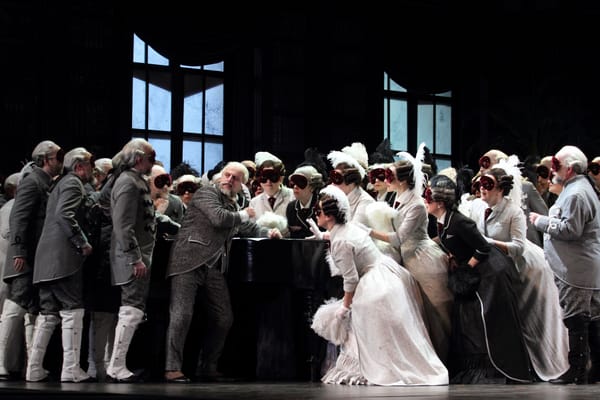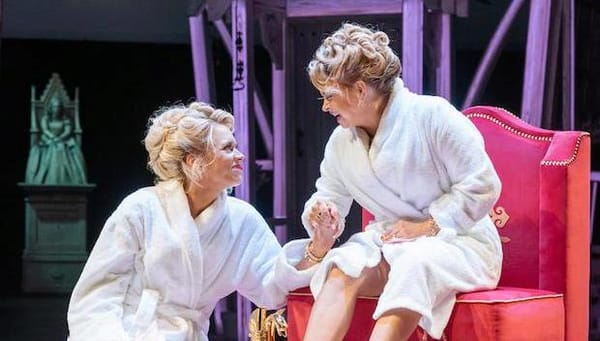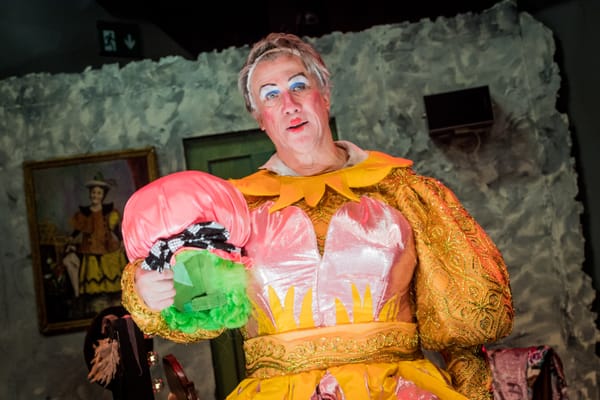Modern Couples: Love and Art in the Modern Age
Exploring the intimate worlds of modern artists.

Modern Couples at the Barbican Centre is an attempt to illuminate an oft-neglected, but crucial aspect of artists’ lives: their romantic relationships. We have developed a preconceived notion of artists being isolated in their artistic journeys. We tend to forget the environment that nourishes them, especially love, intimacy, and passion, which inspire great art. The pursuit of love, much like the pursuit of art, is a tumultuous affair, paved with the greatest joys and the deepest sorrows. Modern Couples shines a spotlight on the intimate space between artist couples – how it changed them, and their art, in return.
The moment you enter the exhibition, you get a sense of peeking into a clandestine affair. The exhibition covers the lives of around forty artist couples. Not restricted to any one discipline, it brings artists from all walks of life: musicians, photographers, painters, sculptors, writers, architects, and designers. The visitors are invited into their lives through artworks, photographs, and excerpts from intimate letters and other texts. The exhibition is categorized into interrelated themes: Russian Avant-garde, Surrealism, Bauhaus, the Bloomsbury Group, Futurism, homosexuality, and so forth. The visitors find artists in different phases of their relationships and how in turn their art was influenced. Major art figures of this era have been included – Rodin, Kahlo, Picasso, Dali, Max Ernst, Klimt, and Man Ray, to name a few. The couples are well chosen by the curators and they never seem to bore. Each relationship gives a fresh perspective and an awareness of the fragile components in a relationship that we take for granted. From the great love story of Barbara Hepworth and Ben Nicholson to the tragic love affair of Dora Maar and Picasso, the exhibition encompasses the entire spectrum.
An important aspect that the exhibition tries to emphasise is the mutually conducive collaboration between the partners. One of the most famous partnerships is between Gustav Klimt and Emilie Flöye. Klimt often incorporated the intricate patterns of Flöye’s fashion designs into his paintings. His most iconic painting, The Kiss, is one of the finest examples of the amalgamation of the arts and fashion. Georgia O’Keeffe’s paintings bear a heavy influence from Modernist photography, possibly due to her relationship with the famous photographer, Alfred Stieglitz. Often, the couple worked on the same subjects, yet expressed themselves in totally disparate ways. For instance, inspired by Stieglitz’s Songs of the Sky, No. 2, Keeffe, a year later, came up with her dreamy version of the same landscape. It was like an intimate exchange between lovers through their artistic prowess. Through their relationships, these couples explored the true meaning of love and their own identity. By illuminating the collaborations, the exhibition also brings into the limelight the many female artists that had remained overshadowed by their male counterparts.
It is interesting how relationships changed the fabric of their lives. Many of these artists found meaning and purpose in their lives during these relationships. Two examples of this are Tina Modotti and Nancy Cunard. Modotti, who had been an established actor in America, found fulfilment through photography. She became a student of the famous photographer, Edward Weston. The student-master relationship soon turned into an affair. During this phase, Modotti found her independent voice in photography and focused her attention on political activism, especially in Mexico.
Nancy Cunard, a British writer and heiress, found purpose in her life after encountering Henry Crowder, a black American jazz musician. Her affair with Crowder in the early 1900s attracted much media attention and a storm of hate mail. This opened her eyes to the tremendous racial injustice and oppression of black Americans. With the help of Crowder and other prominent writers, she went on to publish and edit a 900-page anthology on Black history. Her subsequent life became a crusade against racism and exposing the hypocrisy of the British upper class.
One of my favourites is the room exhibiting the Lee Miller’s pictures taken by Man Ray. Miller, who had been a model in New York, moved to Paris to learn photography from Man Ray. Starting as an apprentice, she soon worked as an equal with Ray. She was his muse and the great love of his life. Ray, intoxicated with love, framed tender pictures of her, notably the nudes. Together, they created and explored new techniques in photography, the most famous being solarization, a technique which became a significant milestone in photography.
At the same time, Miller’s more in-depth pursuit of photography was demanding greater independence. Ray could not endure this and was soon torn apart following their breakup. The room next to this, featuring Mad Love, exhibits works created by Ray during this despair. One of the prominent ones is the Indestructible Object (or Object to Be Destroyed). The metronome, with a pendulum bearing Miller’s eyes, is accompanied by an instruction:
“Cut out the eye from the photograph of one who has been loved but is seen no more. Attach the eye to the pendulum of a metronome and regulate the weight to suit the tempo desired. Keep going to the limit of endurance. With a hammer well-aimed, try to destroy the whole at a single blow.”
The exhibition loses its sheen, particularly in one aspect: its attempt to cover too many lives in a relatively small exhibition space at the Barbican. Instead of exploring a few personal stories, it tries to cover too much. The visitors, in the end, are only able to get scattered snapshots of the couples, giving a hazy glimpse of their relationships without a greater understanding of their precise nature. Moreover, the exhibition does not give equal weight to all the couples. Instead, the focus is commensurate to the popularity and influence of the artists. This could be probably due to limited resources regarding the more obscure artists or just because the lives of prominent artists attract more visitors.
There is a feeling of having visited a secret society; a dizzy headache builds up after seeing so much in a small space. Modern Couples is a near unattainable feat, an ambitious effort to put together unheard, obscure personal accounts of the lives of artists. It surprises, it enlightens the visitors. It leaves us wondering about our relationships in these current times and the true meaning of love and its expression.
-4 stars









